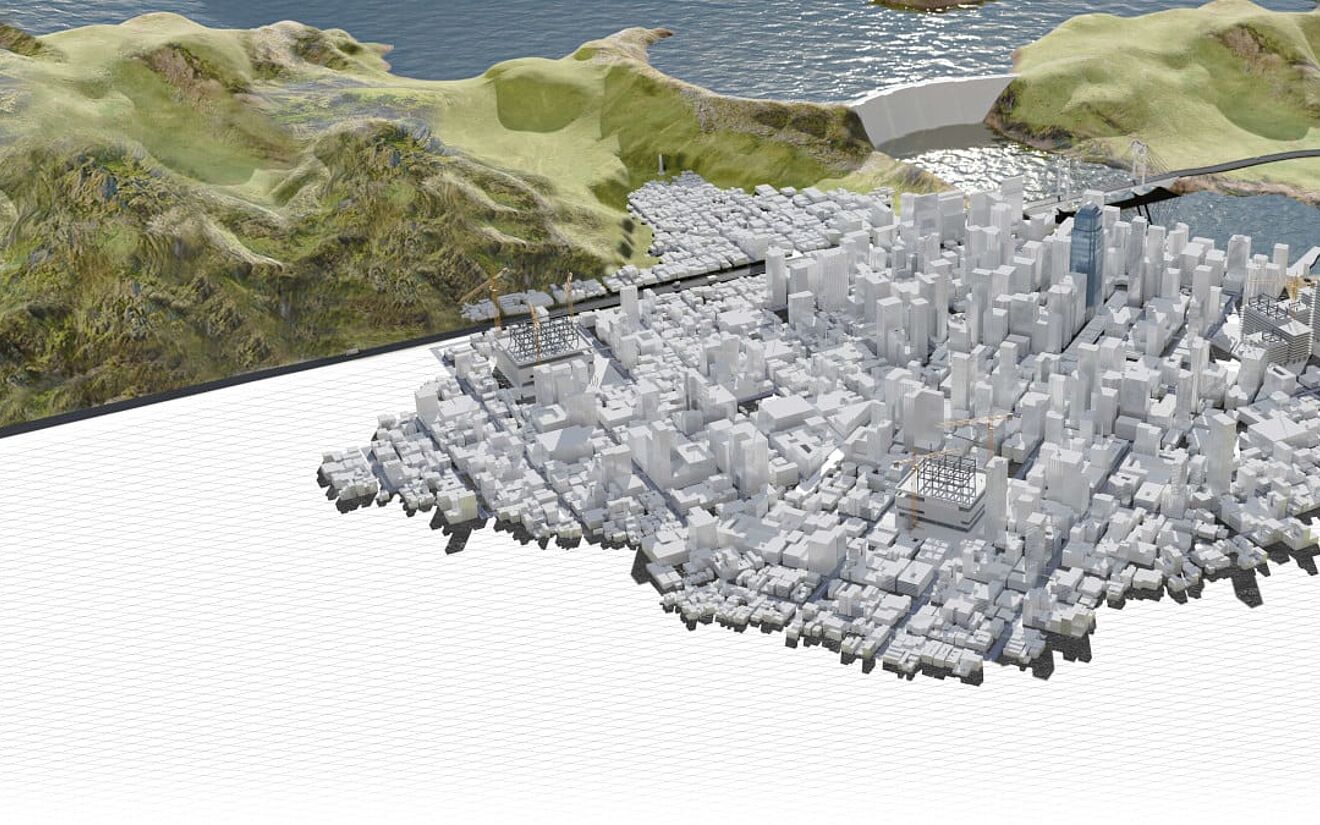Building Information Modeling (BIM) is being mandated and selected for use by more and more clients and authorities. Yet the question remains: does it actually deliver the benefits that we’re all looking for; namely, improved efficiency, fewer errors, less waste, reduced environmental impacts, and faster design and construction schedules? The answer to this is a resounding yes – and the numbers provide the evidence. The business benefits of BIM are many and applicable to all sectors of the architecture, engineering, and construction (AEC) industry.
BIM Design for AEC
When it comes to AEC building projects, BIM enables a much quicker design phase. One of the main advantages of BIM for design is how much faster preparing design deliverables, visualizations, and construction drawings can be. A side-by-side comparison between 2D and 3D design methods shows that 3D design is up to 50% faster, as well as being more accurate than 2D approaches when it comes to creating construction deliverables.
On top of this, BIM methodology offers workflow efficiencies that support collaborative planning and enhanced buildability. Exchanging with planning partners is enabled in an earlier stage of the project and therefor the building design is better coordinated. An engineering office estimated their productivity increased around 30 - 35% by adopting BIM, whilst another experienced the same increase just by switching to ALLPLAN for their planning and design activities. With ALLPLAN, the BIM working methodology is easily implemented and a switch from 2D to 3D to BIM is automatically supported within the software.
“We selected ALLPLAN and saved 30% of our design time.” - DW Group
Factors such as the precision and efficiency of obtaining quantity information contribute to this figure, with quantities derived in seconds from the model instead of laboriously and manually calculated from 2D drawings. This is particularly evident when preparing steel reinforcement quantities and bar bending schedules, which is much faster for our clients, some even estimated up to 90% faster than manual methods. In addition, the output is far more accurate as the quantities reflect what has been designed in the model.
BIM for Infrastructure
BIM for infrastructure design is also now incredibly beneficial. Solutions such as ALLPLAN Bridge combine all phases of bridge design into one powerful, parametric BIM-enabled program. From creating highly detailed bridge models – which include components such as pre-stressing tendons – to structural analysis, drawing production, and construction integration, a bridge-specific BIM solution saves an enormous amount of time and increases accuracy across the entire process. In fact, bridge design could be found to be up to 63% faster and incredibly precise as a result.
For example, the parametric model enables templates to be easily created and re-used for improved design efficiency and substantially greater flexibility in terms of multiple-optioneering throughout the design phase. Meanwhile, the geometrical model is also used to automatically generate the analysis model, such that making changes is easier, saving considerable time and reducing errors. As bridge design is an iterative process, this is particularly beneficial. The interoperability between the geometrical and analytical models also supports more efficient project collaboration, with solutions for a range of different bridge types (including various super- and sub-structure elements).
BIM for Prefabrication
With the use of prefabrication growing steadily, efficient workflows for precast, industrialized construction, and offsite manufacturing are essential for keeping up with demand. BIM offers benefits here as well – numerous automatic functions provide a productivity boost measured at around 52% by Robin Village Development Pte Ltd. For specialist areas, such as MEP design integration, the process can be completed up to 75% faster than using manual design methods. For example, ALLPLAN Precast’s tools such as automatic shop drawing creation, one-click reinforcement, and parametric precast components save significant amounts of time. This enables precast designers and manufacturers to deliver projects much faster than with 2D methods.
Improved quality is another benefit of BIM for prefabrication. Automated validation rules and safety checks can help minimize errors and prevent them before they occur. Imported IFC objects can be easily converted into intelligent precast elements, so no detail is missed. Furthermore, as the model and shop drawings are always synchronized, any changes in the model are instantly reflected in the drawings. Up to 60% higher quality can be achieved using precast BIM solutions, according to the ALLPLAN Precast customer BauMax.
Collaboration with BIM
Collaboration and communication between all parties is 100% more effective with BIM than with 2D approaches. Using cloud technology, the OPEN BIM model-based data and project collaboration platform, Bimplus, helps coordinate activities and control project information seamlessly. Project data can be accessed from anywhere and is always up to date, so everyone can access the latest information they need at any given time.
This also provides the ability to merge, coordinate, review, and manage project data in a centralized model, for more effective decision making. For example, revisions and tasks can be assigned, tracked, and managed centrally through Bimplus or within the BIM Explorer directly in ALLPLAN, which is significantly more efficient. The ability to compare different discipline-specific sub-models together provides a powerful visualization tool that can help identify collisions, provide information to base design decisions on, or even to understand how an element interacts with its surroundings. Transparency, consistency, and coordination are 100% more effective with BIM and a project collaboration platform such as Bimplus, than for example, with drawings and emails alone.
BIM Benefits
BIM is swiftly becoming an essential part of every architecture, engineering, and construction project – and the business benefits of BIM showcase why. Across the entire process chain and in every sector, BIM has the potential to significantly improve communication, efficiency, quality, collaboration, and control. To experience the benefits of BIM and see the productivity gains you can make on your projects, download a free, 30-day trial of ALLPLAN AEC.




